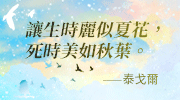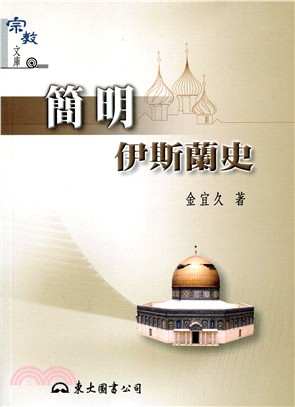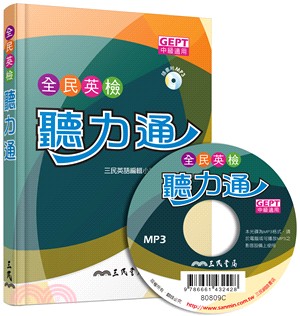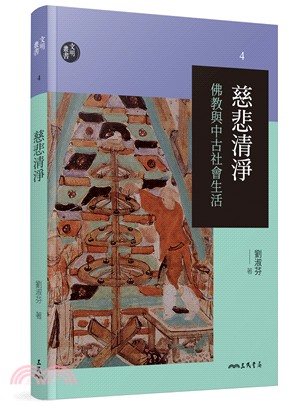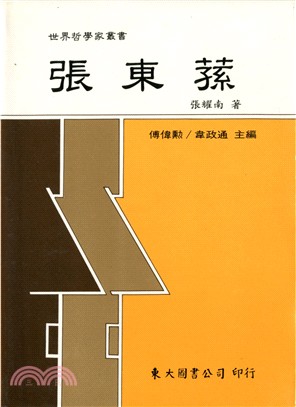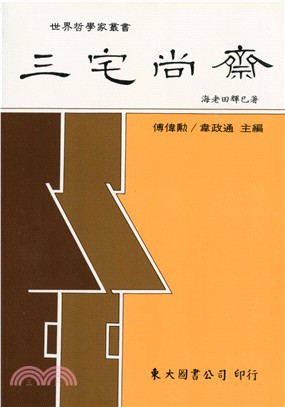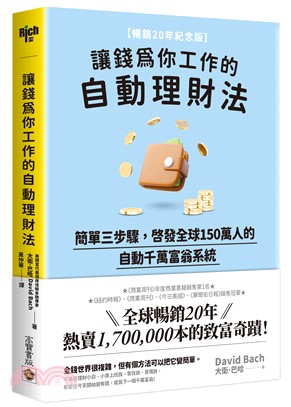相關商品
商品簡介
作者簡介
名人/編輯推薦
序
目次
書摘/試閱
商品簡介
《我們這30年》是一部記錄中國改革開放歷程和變遷的圖文著作。在這部作品中,作者用鏡頭講述了鄧小平逝世、香港回歸、98年特大洪水、總理為農民討工錢、中美世貿談判、北京奧運會等重大事件,以及北京最早選美夭折、市民告別糧票、農民工進城、正在消失的京城胡同等一系列發生在百姓身邊的故事,把這些中國人共同經歷過的有意義、有價值的生活場景用筆記錄下來、用鏡頭定格下來,讓當代人去回味,給后來者以啟迪,給讀者呈現出了這個翻天覆地的時代之變,并且折射出35年來中國改革開放的歷史進程。
作者簡介
Liu Weibing is a senior photographer at Xinhua, China’s state news agency, a member of the Chinese Writers’ Association and a member of the Chinese Photographers’ Association. He is a guest professor at the School of Journalism of the Beijing-based Renmin University of China, where he graduated in 1989. For a long time, Liu Weibing has been close to China’s central leaders to cover their activities. His representative photos include “Premier Presses for Payment of Wages for Peasant Woman” and “Xi Jinping Picks up Glasses for Foreign Guest.” He is author of In the Forefront of War, With Lien Chan on the Mainland and A Retrospect of the Most Recent Two Decades – A Xinhua Photographer’s Notes. He has also published an album titled Impression of the Japanese.
劉衛兵,新華社高級記者,中國作家協會會員、中國攝影家協會會員,中國人民大學新聞學院客座教授。長期從事中央新聞攝影采訪,代表作《總理為農民追工錢》《習近平為外賓撿眼鏡》,攝影作品曾獲中國新聞獎。著有:《奔波在戰爭前線》《隨訪連戰的日子》《回望20
年—一位新華社記者的采訪手記》,以及攝影集《日本人印象》。其中,《回望20 年》獲第四屆徐遲報告文學獎優秀作品獎。
劉衛兵,新華社高級記者,中國作家協會會員、中國攝影家協會會員,中國人民大學新聞學院客座教授。長期從事中央新聞攝影采訪,代表作《總理為農民追工錢》《習近平為外賓撿眼鏡》,攝影作品曾獲中國新聞獎。著有:《奔波在戰爭前線》《隨訪連戰的日子》《回望20
年—一位新華社記者的采訪手記》,以及攝影集《日本人印象》。其中,《回望20 年》獲第四屆徐遲報告文學獎優秀作品獎。
名人/編輯推薦
真實記錄改革開放歷史進程 瞬間折射時代發展進步軌跡
李肇星、何平、梁曉聲、梁衡傾情推薦!
1978-2013,中國改革開放35年,講述中國人記憶深處的改革故事
李肇星、何平、梁曉聲、梁衡傾情推薦!
1978-2013,中國改革開放35年,講述中國人記憶深處的改革故事
序
Preface I
A True-to-Life Account of Chinas Epic Changes
- Thoughts on Liu Weibings New Book
By Li Zhaoxing
Liu Weibing, a senior photographer and a guest professor at the School of Journalism of Renmin University of China (RUC), is an old friend of mine though he is many years my junior. Here is his new book Stories of Chinas Reform - a Photographers Personal Experiences, which I read at onesitting. The book is so dear to me - and also so new to me even though Iam familiar with many events cited in it.
China has changed with each passing day since it launched the reformsome 30 years ago. And never has life in the country been so lively andfull of vigor like today. Basing himself on a wealth of experiences he hasacquired through work as a photographer at Xinhua, the State newsagency, Weibing has written candidly to provide a true-to-life account ofthose epic changes.
I experienced numerous events cited in the book. I was able to go toschool only after New Chinas birth in 1949. Never had I dreamed thatI would be able to stand on Tiananmen Rostrum watching the militaryand civilian parades marking New Chinas 60h founding anniversary onOctober 1, 2009. With tears in my eyes, I saw the characters reading "Longlive the people" formed by students in Tiananmen Square using flowers intheir hands. I was deputy head of the Chinese delegation to the 1995 WorldConference on Women and I was on the Beijing Bidding Committee forthe 2008 Olympic Games. I was involved in the negotiations on HongKongs return to China, in the negotiations on Chinas accession to theWorld Trade Organization and in the rescue and relief operations after the2008 Wenchuan earthquake.
Despite my personal experiences in those events, I feel Weibingsnarratives and photos new to me. I was at Shatoujiao announcing Chinastakeover of the Kowloon Customs on authorization of the CentralGovernment at zero hour of July 1, 1997, a moment of nationwidejubilation for resumption of Chinas exercise of sovereignty over HongKong. Despite that, I have found things new in Weibings comparisonbetween Border Street and Silk Alley, a business street in Beijing, which hedoes by transcending time and space and using plain language.
As deputy head of the Chinese delegation to the 1995 World Conferenceon Women, I was able to listen to speeches delivered by delegates fromvarious countries. Weibings new book, which I read 18 years after theConference, tells me many things of which I had no idea as a leaderof the Chinese delegation - his amiable encounter with some Africandelegates, those "surprising discoveries" he made at Huairou, venue for theConferences non-governmental forum. Just for one thing: the Chinesedelegates were customarily reserved, busy taking notes while a leader oftheirs was reading from a text in all seriousness on the rostrum, in contrastto foreign delegates who were vivacious and bold, never hesitating to airtheir views.
I was impressed by Weibings interpretation of those events, Chineseand foreign, bygone and of today, which I found profound in meaning."Ihe book tells about the progress Beijing has made, for example thetransformation of Longxugou, once a notorious slum area, into whatis now Longtan Park. Meanwhile, it provides a vivid account of thesmog that shrouded the Chinese capital for days on end in early 2013,making "environmental protectioff household words. Here is the authorsconclusion: "Only by being friendly to environment can people enjoy anenvironment friendly to them." It falls in line with the call of the Chinesegovernment for attaching paramount importance to peoples livelihoodand to attainment of sustainable development.
Another example is the books account of migrant workers in Beijing.The author, full of sympathy toward them, uses a host of facts to highlighttheir role in promoting the development of cities and improving lifeof city people. Meanwhile, he is relentlessly scornful of those "swollenwith arrogance" toward migrant workers, those "holding a brief case inhand," "with a conspicuously extruding beer belly." Basing himself on hisown observation, the author notes that city people of today may well bedescendent of peasants or migrant workers. And proceeding from that,he dwells on some ups and downs experienced by foreign countries in thecourse of their development and pinpoints what China can learn fromthem.
I believe the book is of both historic and practical significance. It throwslight on the road we have followed and helps us in our understanding ofthe path we are to follow. It makes us proud of the progress we have madewhile alerting us to the need not to be self-complacent, so that well bemore resolved and confident in our march toward the future.
-June 25, 2013, in my office at China Public
Diplomacy Association
A True-to-Life Account of Chinas Epic Changes
- Thoughts on Liu Weibings New Book
By Li Zhaoxing
Liu Weibing, a senior photographer and a guest professor at the School of Journalism of Renmin University of China (RUC), is an old friend of mine though he is many years my junior. Here is his new book Stories of Chinas Reform - a Photographers Personal Experiences, which I read at onesitting. The book is so dear to me - and also so new to me even though Iam familiar with many events cited in it.
China has changed with each passing day since it launched the reformsome 30 years ago. And never has life in the country been so lively andfull of vigor like today. Basing himself on a wealth of experiences he hasacquired through work as a photographer at Xinhua, the State newsagency, Weibing has written candidly to provide a true-to-life account ofthose epic changes.
I experienced numerous events cited in the book. I was able to go toschool only after New Chinas birth in 1949. Never had I dreamed thatI would be able to stand on Tiananmen Rostrum watching the militaryand civilian parades marking New Chinas 60h founding anniversary onOctober 1, 2009. With tears in my eyes, I saw the characters reading "Longlive the people" formed by students in Tiananmen Square using flowers intheir hands. I was deputy head of the Chinese delegation to the 1995 WorldConference on Women and I was on the Beijing Bidding Committee forthe 2008 Olympic Games. I was involved in the negotiations on HongKongs return to China, in the negotiations on Chinas accession to theWorld Trade Organization and in the rescue and relief operations after the2008 Wenchuan earthquake.
Despite my personal experiences in those events, I feel Weibingsnarratives and photos new to me. I was at Shatoujiao announcing Chinastakeover of the Kowloon Customs on authorization of the CentralGovernment at zero hour of July 1, 1997, a moment of nationwidejubilation for resumption of Chinas exercise of sovereignty over HongKong. Despite that, I have found things new in Weibings comparisonbetween Border Street and Silk Alley, a business street in Beijing, which hedoes by transcending time and space and using plain language.
As deputy head of the Chinese delegation to the 1995 World Conferenceon Women, I was able to listen to speeches delivered by delegates fromvarious countries. Weibings new book, which I read 18 years after theConference, tells me many things of which I had no idea as a leaderof the Chinese delegation - his amiable encounter with some Africandelegates, those "surprising discoveries" he made at Huairou, venue for theConferences non-governmental forum. Just for one thing: the Chinesedelegates were customarily reserved, busy taking notes while a leader oftheirs was reading from a text in all seriousness on the rostrum, in contrastto foreign delegates who were vivacious and bold, never hesitating to airtheir views.
I was impressed by Weibings interpretation of those events, Chineseand foreign, bygone and of today, which I found profound in meaning."Ihe book tells about the progress Beijing has made, for example thetransformation of Longxugou, once a notorious slum area, into whatis now Longtan Park. Meanwhile, it provides a vivid account of thesmog that shrouded the Chinese capital for days on end in early 2013,making "environmental protectioff household words. Here is the authorsconclusion: "Only by being friendly to environment can people enjoy anenvironment friendly to them." It falls in line with the call of the Chinesegovernment for attaching paramount importance to peoples livelihoodand to attainment of sustainable development.
Another example is the books account of migrant workers in Beijing.The author, full of sympathy toward them, uses a host of facts to highlighttheir role in promoting the development of cities and improving lifeof city people. Meanwhile, he is relentlessly scornful of those "swollenwith arrogance" toward migrant workers, those "holding a brief case inhand," "with a conspicuously extruding beer belly." Basing himself on hisown observation, the author notes that city people of today may well bedescendent of peasants or migrant workers. And proceeding from that,he dwells on some ups and downs experienced by foreign countries in thecourse of their development and pinpoints what China can learn fromthem.
I believe the book is of both historic and practical significance. It throwslight on the road we have followed and helps us in our understanding ofthe path we are to follow. It makes us proud of the progress we have madewhile alerting us to the need not to be self-complacent, so that well bemore resolved and confident in our march toward the future.
-June 25, 2013, in my office at China Public
Diplomacy Association
目次
第一章 這些年,這些事兒
別了,糧票
冬天,母親給我搬來一百斤大白菜
父母搶購降價貨
買外國國債別賠了
“熊貓”羞怯上公交
如此“礦泉水”
從秀水街到中英街
第二章 城市與鄉村的變遷
中關村的蛻變
記憶中胡同的消失
霧霾籠罩,通惠河還清
在路上
京九青藏線,高鐵萬里一日還
村里來了志愿者
進城的農民工
總理為農民追工錢
第三章 文化與觀念的變奏
我的大學
北京最早的選美賽“黃了”
大陸第一個“試管嬰兒”
直擊北大推倒南墻
電影何時再輝煌
告別老相機
今天你看微博了嗎
第四章 中國離世界更近了
中洋快餐初戰
小城迎盛會,上海辦世博
香港回來了
聚焦中美世貿談判
目擊圓明園獸首拍賣
申奧失利與成功的背后
第五章 親歷的大事件
鄧小平逝世的日子
1998,特大洪水夾擊中國
親歷三次國慶盛典
“非典”突然襲來
隨連戰首訪大陸
大地震:汶川不是唐山
后記
別了,糧票
冬天,母親給我搬來一百斤大白菜
父母搶購降價貨
買外國國債別賠了
“熊貓”羞怯上公交
如此“礦泉水”
從秀水街到中英街
第二章 城市與鄉村的變遷
中關村的蛻變
記憶中胡同的消失
霧霾籠罩,通惠河還清
在路上
京九青藏線,高鐵萬里一日還
村里來了志愿者
進城的農民工
總理為農民追工錢
第三章 文化與觀念的變奏
我的大學
北京最早的選美賽“黃了”
大陸第一個“試管嬰兒”
直擊北大推倒南墻
電影何時再輝煌
告別老相機
今天你看微博了嗎
第四章 中國離世界更近了
中洋快餐初戰
小城迎盛會,上海辦世博
香港回來了
聚焦中美世貿談判
目擊圓明園獸首拍賣
申奧失利與成功的背后
第五章 親歷的大事件
鄧小平逝世的日子
1998,特大洪水夾擊中國
親歷三次國慶盛典
“非典”突然襲來
隨連戰首訪大陸
大地震:汶川不是唐山
后記
書摘/試閱
記憶中胡同的消失
打開老北京地圖,發現中國明清時期留下的北京城,可謂是世界城建史上的一個奇跡。倘若把京城比作一個人的身體,紫禁城就是心臟,前門、鼓樓連起的南北中軸線是主軀干,遍布全城、錯落有致的街巷和胡同就是人的血管。如此四四方方的城市布局實在難得。美國首都華盛頓中心區的布局和北京有些類似,登上華盛頓紀念碑俯瞰下去,以國會大廈、林肯紀念堂、紀念碑為中心線,兩側有序排列著博物館等建筑,疏朗有致。華盛頓中心區的建筑基本上是石材,北京中心區的建筑是傳統的土木結構,各有各的文化特點和建筑風格。
胡同既是老北京的傳統也是新北京的特色。假如有一天北京的胡同消失殆盡,恐怕沒有人再相信,這是一座有著三千多年建城史、八百五十多年建都史的歷史文化名城,中國歷史上的元、明、清等王朝都建都于此。據說,1948年解放軍圍困北京時,為了保護古建筑,專門派人悄悄找到著名建筑學家梁思成,讓他幫助標注古建筑的位置,以免被炮火破壞,可見當時人們就有保護古都風貌和古建筑文化的意識。
新中國成立后,保護古都風貌與進行經濟建設發生沖突,梁思成等一批學者建議在北京城外另建新城,以保護古都、疏散人口和改善交通,但由于新中國一窮二白,發展經濟的意見占了上風,最終北京的老城墻拆了,牌樓拆了,許多古建筑或拆或挪為他用,讓北京人和中國人都覺得遺憾。
回顧30多年北京的變化,最大的莫過于城市風貌。20世紀90年代以后,北京發展快,變化也快,變得很多地方連北京人都認不出來。那時候,北京到處都像工地,都在拆房、修路、蓋樓。隨著高樓大廈如雨后春筍般矗立起來,北京變得越來越現代,可老北京的胡同和特色越來越少。如今走遍京城,除了故宮、天壇、頤和園還能看出一些老北京的影子,其他地方已難覓八百多年古都的風貌。登上京城中心的制高點景山眺望,北京城的四周,儼然已被高樓大廈包圍。
伴隨著北京城的日新月異,“北京胡同即將消失”的話題不絕于耳。身為攝影記者的我,自覺為即將逝去的古都文化留下歷史的印證是自己的責任。我利用業余時間,蹬上自行車,拍攝了幾十條即將拆除的胡同,希望用鏡頭多給老北京、老胡同留點紀念。如今20多年過去,當年的許多胡同不見了,只留下照片上的記憶。
1993年初的冬天,我偶爾路過宣武門路口東南角,發現一些胡同的墻上出現了一個個“拆”字。再往胡同里一看,有些老房子正在拆除。我過去采訪時,正好遇到一些小學生在廢墟上玩耍,破敗的廢墟和后面的高樓形成強烈對比。后來,那片胡同拆了,蓋起了SOGO等大型商場和寫字樓。
由于歷史原因,北京人過去的居住條件很差,很多家庭三代人擠在十幾平方米的破房里。20世紀70年代到90年代,我們一家四口人,先后住過十幾平方米的平房和30平方米的簡易樓,這在當時還不算差的。比較起來,許多胡同里的環境和居住條件確實很艱苦。有些原本不大的四合院里,隨著人口增加,漸漸住進十幾戶甚至幾十戶人家,上大學時,我曾到住在胡同里的幾位同學家去玩,偶爾還住上一夜。院子里各種雜物堆得滿滿當當,很多地方狹窄得連自行車和人都過不去,人們的日常生活、出行都十分不便。我曾在崇文區的胡同里,見過一家3口擠在不到10平方米的破舊簡易房里,家里的姑娘已經二十多歲了,遇到姑娘洗澡時,父母只好躲出去溜達。
胡同要拆遷改造,不少人又“故土難離”。雖說住在胡同里條件差,可很多居民特別是老人們在這里生活了一輩子,上了年紀,腿腳不便,不愿意搬遷。一位年逾八旬的老人反復跟我說:“住這兒習慣,哪兒都不想去!”望著我的鏡頭,老人眼睛里浸出了淚水。很多住進樓房的人至今還在懷念胡同里的生活。
……
打開老北京地圖,發現中國明清時期留下的北京城,可謂是世界城建史上的一個奇跡。倘若把京城比作一個人的身體,紫禁城就是心臟,前門、鼓樓連起的南北中軸線是主軀干,遍布全城、錯落有致的街巷和胡同就是人的血管。如此四四方方的城市布局實在難得。美國首都華盛頓中心區的布局和北京有些類似,登上華盛頓紀念碑俯瞰下去,以國會大廈、林肯紀念堂、紀念碑為中心線,兩側有序排列著博物館等建筑,疏朗有致。華盛頓中心區的建筑基本上是石材,北京中心區的建筑是傳統的土木結構,各有各的文化特點和建筑風格。
胡同既是老北京的傳統也是新北京的特色。假如有一天北京的胡同消失殆盡,恐怕沒有人再相信,這是一座有著三千多年建城史、八百五十多年建都史的歷史文化名城,中國歷史上的元、明、清等王朝都建都于此。據說,1948年解放軍圍困北京時,為了保護古建筑,專門派人悄悄找到著名建筑學家梁思成,讓他幫助標注古建筑的位置,以免被炮火破壞,可見當時人們就有保護古都風貌和古建筑文化的意識。
新中國成立后,保護古都風貌與進行經濟建設發生沖突,梁思成等一批學者建議在北京城外另建新城,以保護古都、疏散人口和改善交通,但由于新中國一窮二白,發展經濟的意見占了上風,最終北京的老城墻拆了,牌樓拆了,許多古建筑或拆或挪為他用,讓北京人和中國人都覺得遺憾。
回顧30多年北京的變化,最大的莫過于城市風貌。20世紀90年代以后,北京發展快,變化也快,變得很多地方連北京人都認不出來。那時候,北京到處都像工地,都在拆房、修路、蓋樓。隨著高樓大廈如雨后春筍般矗立起來,北京變得越來越現代,可老北京的胡同和特色越來越少。如今走遍京城,除了故宮、天壇、頤和園還能看出一些老北京的影子,其他地方已難覓八百多年古都的風貌。登上京城中心的制高點景山眺望,北京城的四周,儼然已被高樓大廈包圍。
伴隨著北京城的日新月異,“北京胡同即將消失”的話題不絕于耳。身為攝影記者的我,自覺為即將逝去的古都文化留下歷史的印證是自己的責任。我利用業余時間,蹬上自行車,拍攝了幾十條即將拆除的胡同,希望用鏡頭多給老北京、老胡同留點紀念。如今20多年過去,當年的許多胡同不見了,只留下照片上的記憶。
1993年初的冬天,我偶爾路過宣武門路口東南角,發現一些胡同的墻上出現了一個個“拆”字。再往胡同里一看,有些老房子正在拆除。我過去采訪時,正好遇到一些小學生在廢墟上玩耍,破敗的廢墟和后面的高樓形成強烈對比。后來,那片胡同拆了,蓋起了SOGO等大型商場和寫字樓。
由于歷史原因,北京人過去的居住條件很差,很多家庭三代人擠在十幾平方米的破房里。20世紀70年代到90年代,我們一家四口人,先后住過十幾平方米的平房和30平方米的簡易樓,這在當時還不算差的。比較起來,許多胡同里的環境和居住條件確實很艱苦。有些原本不大的四合院里,隨著人口增加,漸漸住進十幾戶甚至幾十戶人家,上大學時,我曾到住在胡同里的幾位同學家去玩,偶爾還住上一夜。院子里各種雜物堆得滿滿當當,很多地方狹窄得連自行車和人都過不去,人們的日常生活、出行都十分不便。我曾在崇文區的胡同里,見過一家3口擠在不到10平方米的破舊簡易房里,家里的姑娘已經二十多歲了,遇到姑娘洗澡時,父母只好躲出去溜達。
胡同要拆遷改造,不少人又“故土難離”。雖說住在胡同里條件差,可很多居民特別是老人們在這里生活了一輩子,上了年紀,腿腳不便,不愿意搬遷。一位年逾八旬的老人反復跟我說:“住這兒習慣,哪兒都不想去!”望著我的鏡頭,老人眼睛里浸出了淚水。很多住進樓房的人至今還在懷念胡同里的生活。
……
主題書展
更多
主題書展
更多書展本週66折
您曾經瀏覽過的商品
購物須知
大陸出版品因裝訂品質及貨運條件與台灣出版品落差甚大,除封面破損、內頁脫落等較嚴重的狀態,其餘商品將正常出貨。
特別提醒:部分書籍附贈之內容(如音頻mp3或影片dvd等)已無實體光碟提供,需以QR CODE 連結至當地網站註冊“並通過驗證程序”,方可下載使用。
無現貨庫存之簡體書,將向海外調貨:
海外有庫存之書籍,等候約45個工作天;
海外無庫存之書籍,平均作業時間約60個工作天,然不保證確定可調到貨,尚請見諒。
為了保護您的權益,「三民網路書店」提供會員七日商品鑑賞期(收到商品為起始日)。
若要辦理退貨,請在商品鑑賞期內寄回,且商品必須是全新狀態與完整包裝(商品、附件、發票、隨貨贈品等)否則恕不接受退貨。
優惠價:87
407
海外經銷商無庫存,到貨日平均30天至45天













